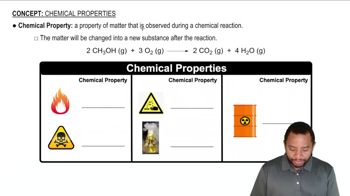Here are the essential concepts you must grasp in order to answer the question correctly.
Functional Groups
Functional groups are specific groups of atoms within molecules that are responsible for the characteristic chemical reactions of those molecules. They determine the properties and reactivity of organic compounds, influencing how they interact with other substances. Common examples include hydroxyl (-OH), carboxyl (-COOH), and amino (-NH2) groups.
Recommended video:
Carbonyl Functional Groups
Chemical Reactivity
The reactivity of a molecule refers to its ability to undergo chemical reactions, which is largely dictated by the presence and type of functional groups. Different functional groups can lead to different reaction pathways, making them crucial for predicting how a compound will behave in various chemical environments.
Recommended video:
Biological Significance
Functional groups play a vital role in biological systems, as they are involved in the structure and function of biomolecules like proteins, nucleic acids, and lipids. Their specific arrangements and interactions are essential for processes such as enzyme activity, signal transduction, and metabolic pathways, highlighting their importance in biochemistry and life sciences.
Recommended video:
Significant Figures Example




